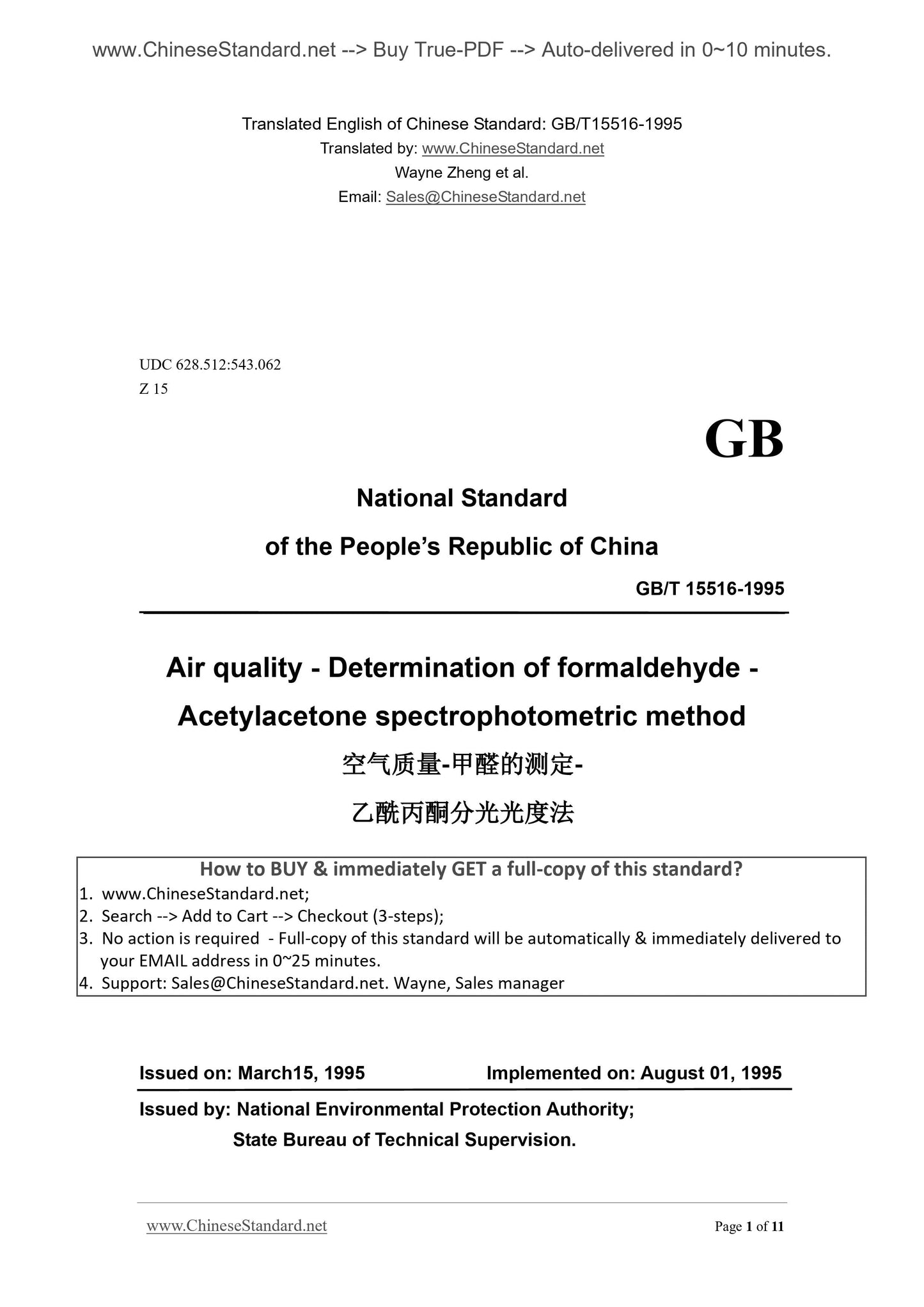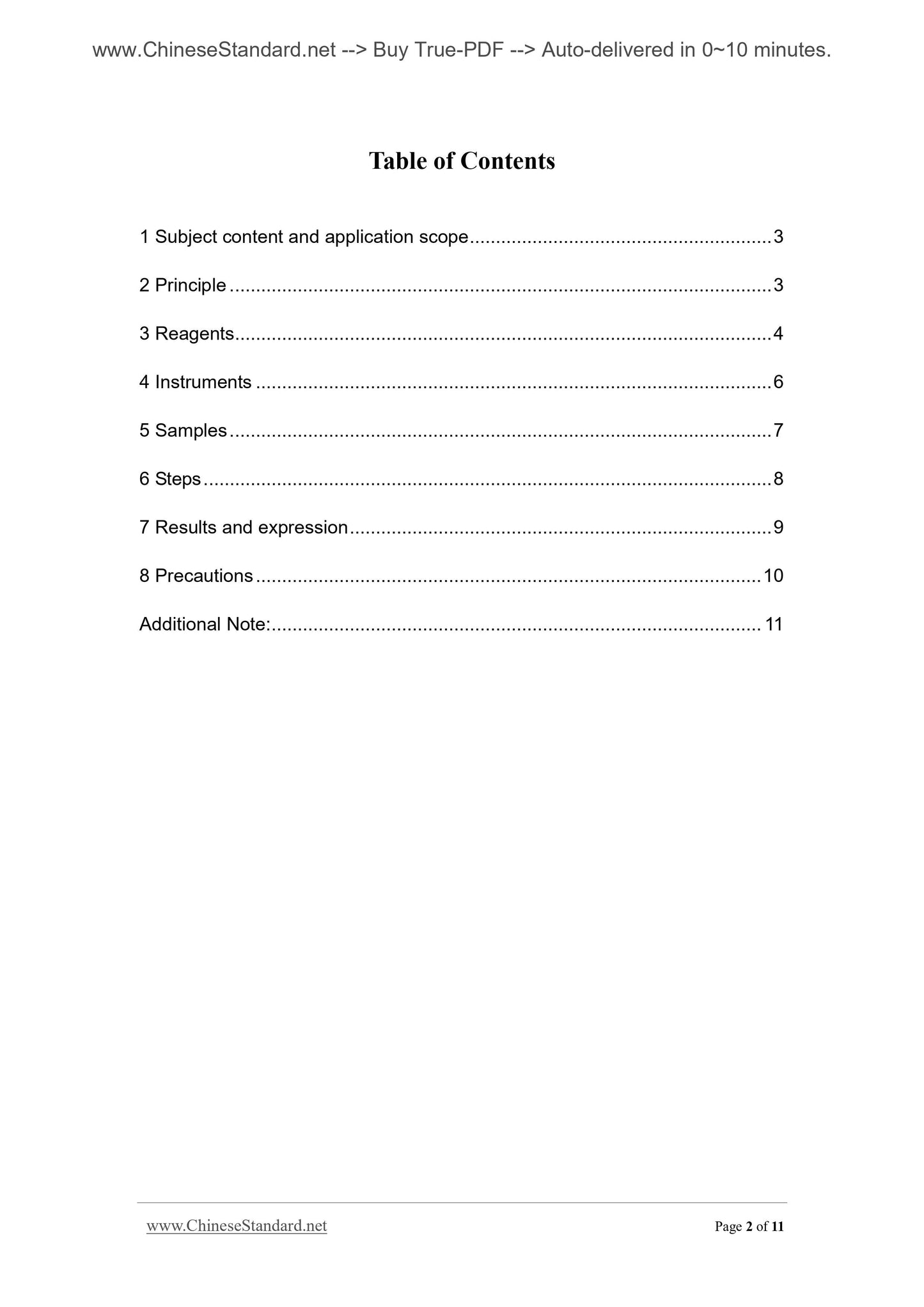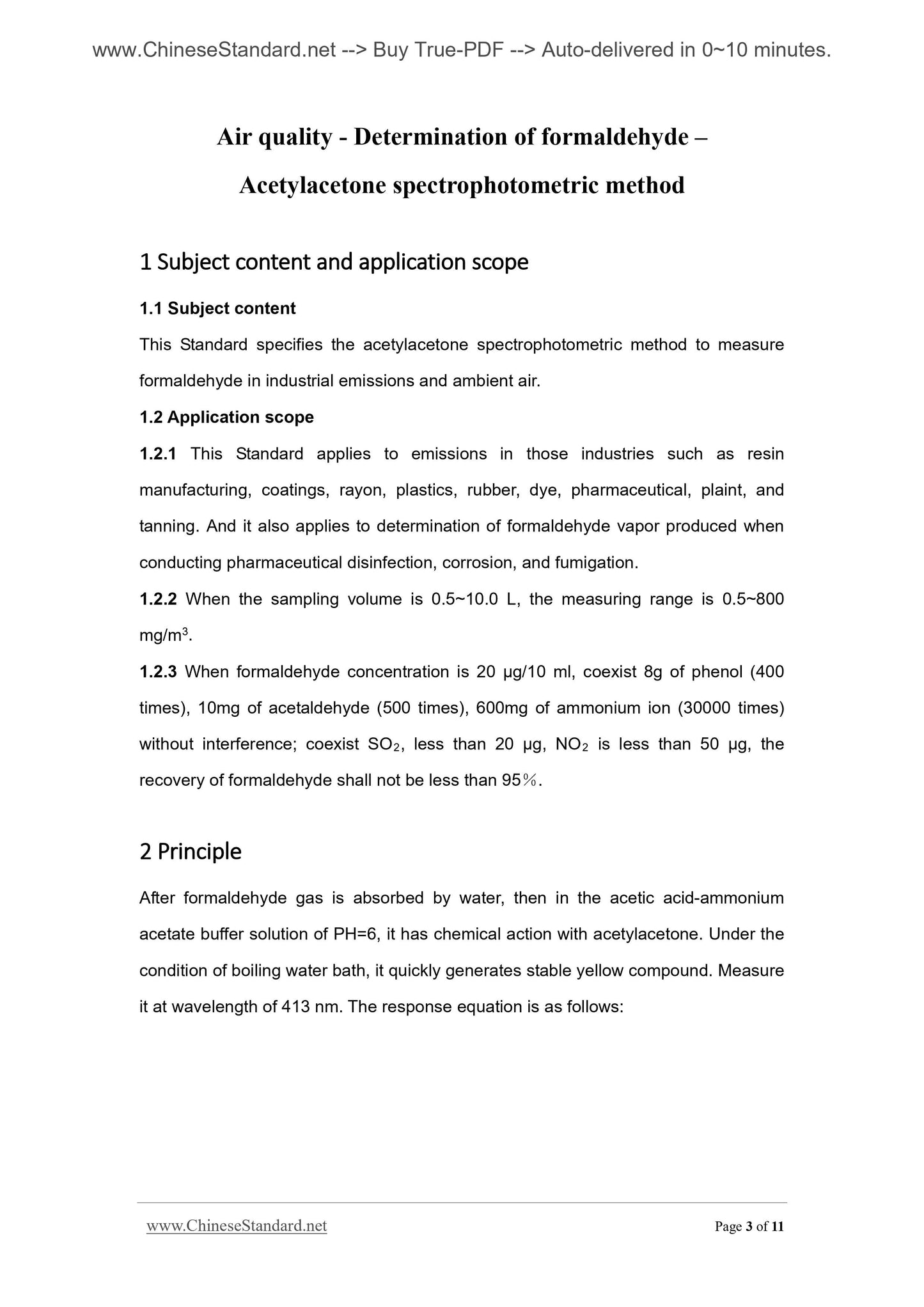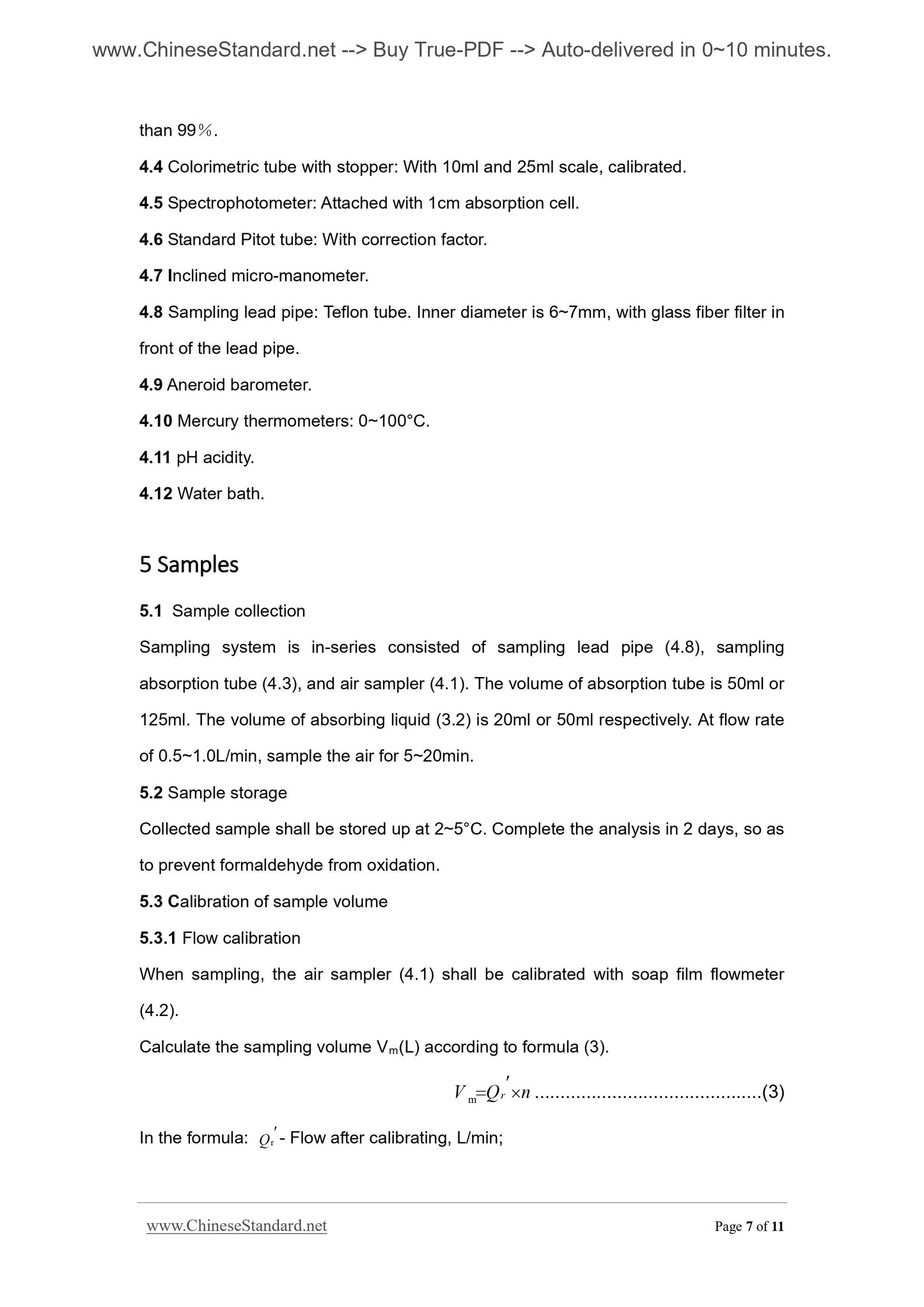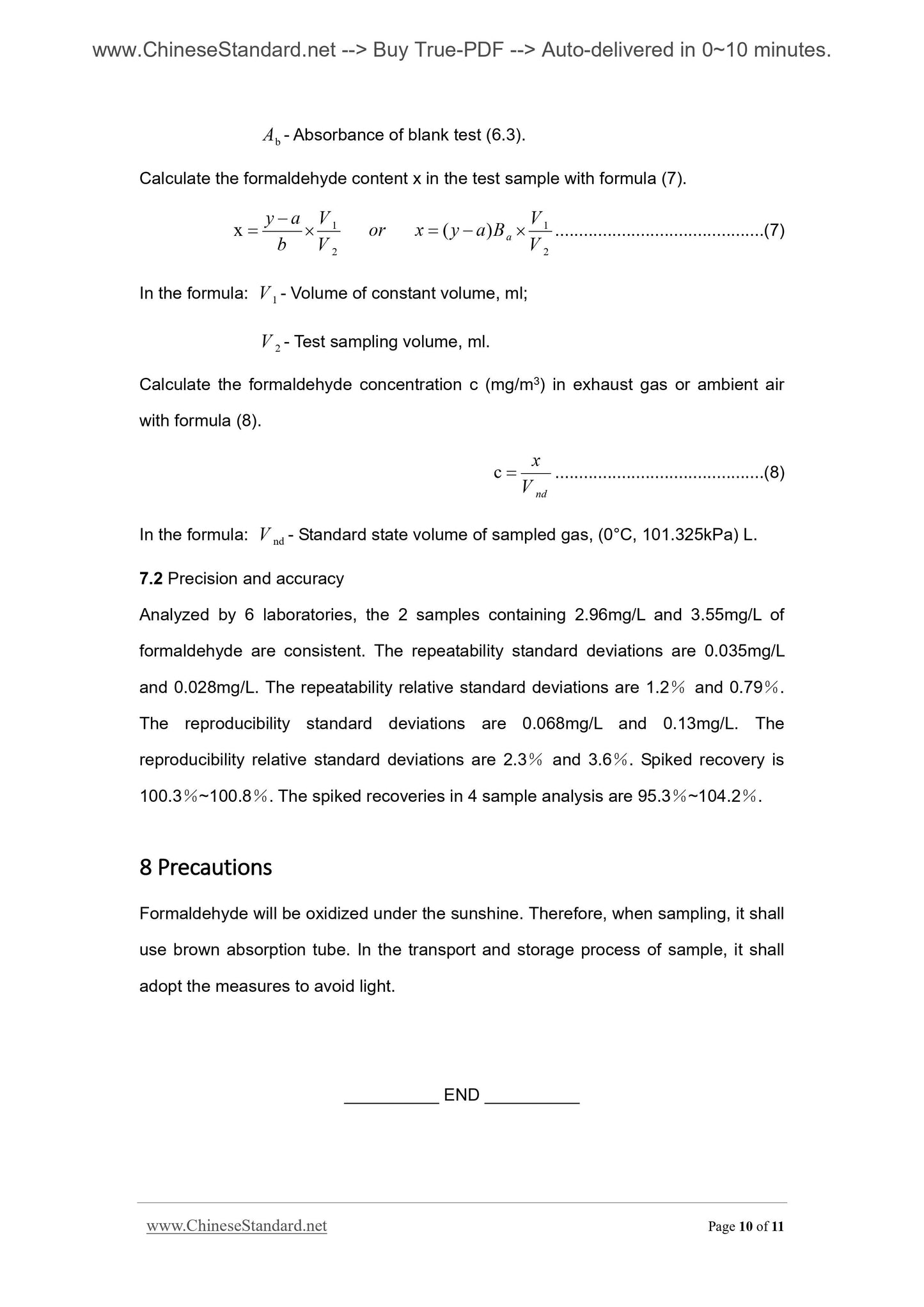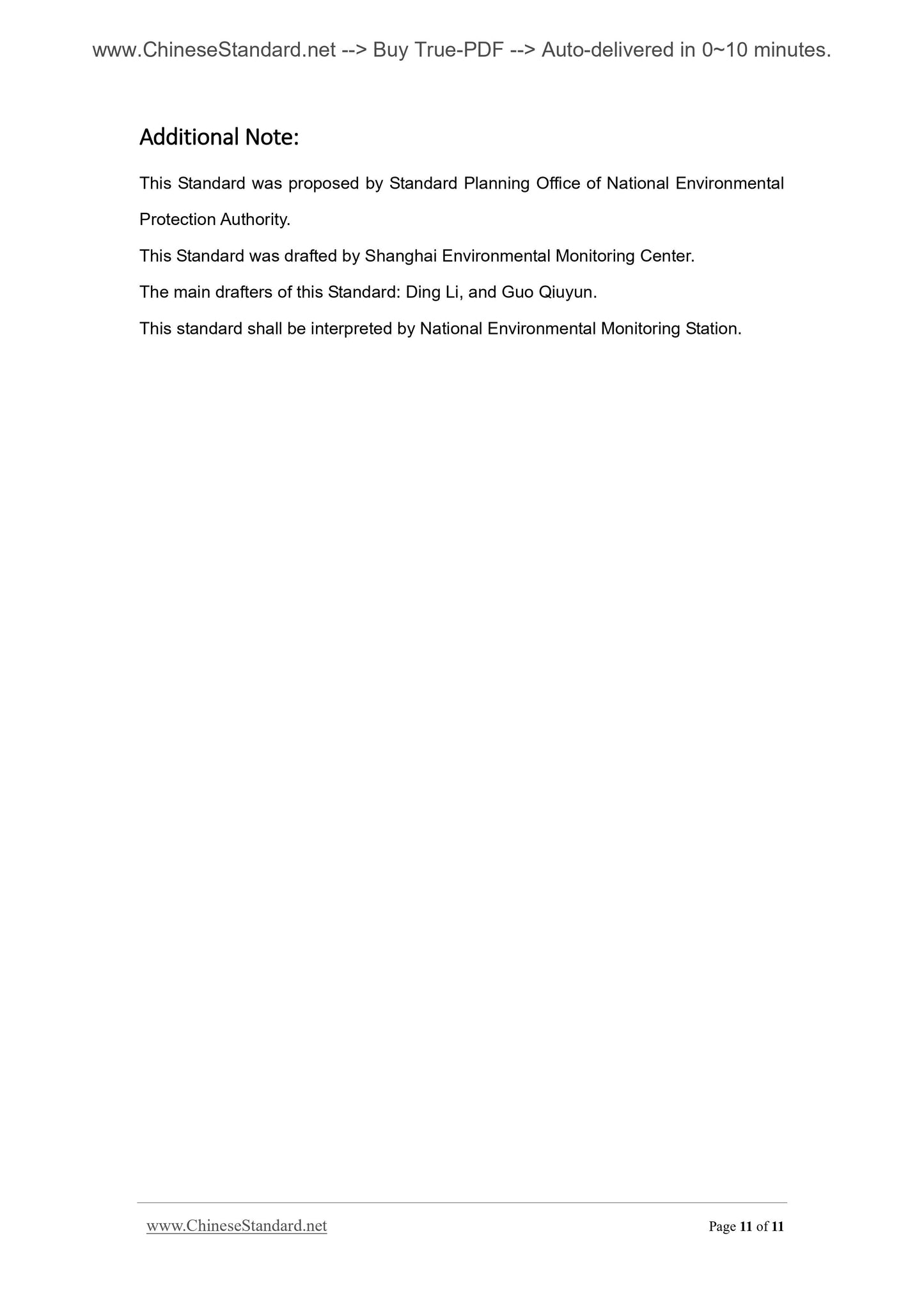1
/
of
6
www.ChineseStandard.us -- Field Test Asia Pte. Ltd.
GB/T 15516-1995 English PDF (GB/T15516-1995)
GB/T 15516-1995 English PDF (GB/T15516-1995)
Regular price
$90.00
Regular price
Sale price
$90.00
Unit price
/
per
Shipping calculated at checkout.
Couldn't load pickup availability
GB/T 15516-1995: Air quality - Determination of formaldehyde - Acetylacetone spectrophotometric method
Delivery: 9 seconds. Download (and Email) true-PDF + Invoice.Get Quotation: Click GB/T 15516-1995 (Self-service in 1-minute)
Newer / historical versions: GB/T 15516-1995
Preview True-PDF
Scope
1.1 Subject contentThis Standard specifies the acetylacetone spectrophotometric method to measure
formaldehyde in industrial emissions and ambient air.
1.2 Application scope
1.2.1 This Standard applies to emissions in those industries such as resin
manufacturing, coatings, rayon, plastics, rubber, dye, pharmaceutical, plaint, and
tanning. And it also applies to determination of formaldehyde vapor produced when
conducting pharmaceutical disinfection, corrosion, and fumigation.
1.2.2 When the sampling volume is 0.5~10.0 L, the measuring range is 0.5~800
mg/m3.
1.2.3 When formaldehyde concentration is 20 µg/10 ml, coexist 8g of phenol (400
times), 10mg of acetaldehyde (500 times), 600mg of ammonium ion (30000 times)
without interference; coexist SO2, less than 20 µg, NO2 is less than 50 µg, the
recovery of formaldehyde shall not be less than 95%.
Basic Data
| Standard ID | GB/T 15516-1995 (GB/T15516-1995) |
| Description (Translated English) | Air quality - Determination of formaldehyde - Acetylacetone spectrophotometric method |
| Sector / Industry | National Standard (Recommended) |
| Classification of Chinese Standard | Z15 |
| Classification of International Standard | 13.040.01 |
| Word Count Estimation | 6,616 |
| Date of Issue | 3/15/1995 |
| Date of Implementation | 8/1/1995 |
| Issuing agency(ies) | National Environmental Protection Agency, State Bureau of Technical Supervision |
| Summary | This standard applies to emissions resin, paints, synthetic fibers, plastics, rubber, dyes, pharmaceuticals, paints, leather and other industries, as well as pharmaceutical disinfectant, antiseptic, formaldehyde vapors generated when measured fumigation. When the sample size is 0. 5 ~ 10. 0L, the measuring range of 0. 5 ~ 800mg/m ^ 3. |
Share
